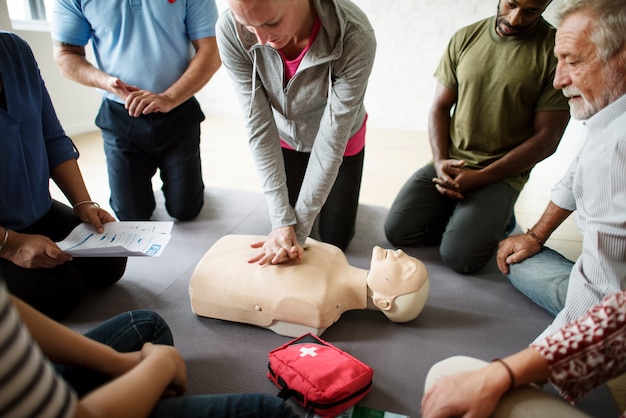Navigating Emergencies: Proactive Strategies In Emergency Coordinator Training
In the face of ever-evolving challenges, effective emergency management demands a proactive approach. "Navigating Emergencies: Proactive Strategies in Emergency Coordinator Training" explores the essential components of preparing for and responding to crises. From natural disasters to unforeseen events, emergency coordinators are tasked with orchestrating responses that safeguard lives and minimize damage. This article delves into the proactive strategies and training methodologies that empower these frontline responders to anticipate, plan, and mitigate the impact of emergencies with precision and efficiency.
Understanding the Role of Emergency Coordinators
Defining the Role
Emergency coordinators are pivotal figures tasked with orchestrating responses to crises within organizations and communities. Their role involves conducting risk assessments, developing comprehensive emergency response plans, and efficiently allocating resources. Effective communication among response teams, authorities, and affected populations is paramount. Additionally, emergency coordinators play a crucial role in training personnel, coordinating efforts, and managing resources to ensure effective crisis management.
Key Responsibilities
- Risk Assessment: Emergency coordinators must conduct thorough risk assessments to identify potential hazards and vulnerabilities within their operational areas. This includes analyzing factors such as geographical location, infrastructure, population density, and historical data on previous emergencies.
- Planning and Preparedness: Developing comprehensive emergency response plans is vital. Coordinators must outline protocols for various scenarios, allocate resources efficiently, and establish communication channels with relevant stakeholders.
- Coordination and Communication: During emergencies, effective communication is paramount. Coordinators must facilitate clear and timely communication among response teams, authorities, and the affected population to disseminate critical information and instructions.
- Training and Drills: Regular training sessions and drills are essential to ensure that response teams are well-prepared to handle emergencies. Coordinators should conduct simulations of different crisis scenarios to test response protocols and identify areas for improvement.

Developing Proactive Mindsets
Anticipating and Planning for Various Scenarios
Anticipating and planning for various scenarios is a cornerstone of effective emergency preparedness. Emergency coordinators proactively identify potential risks, study historical data, and stay informed about emerging threats. By envisioning different crisis scenarios, they can develop robust response strategies tailored to each situation. This proactive approach enables them to mitigate risks, enhance preparedness, and respond swiftly and effectively when emergencies arise.
Implementing Continuous Training and Education
Emergency response techniques and technologies evolve rapidly, requiring coordinators to stay abreast of the latest developments through continuous training and education. Investing in ongoing professional development programs ensures that coordinators possess up-to-date knowledge and skills to effectively manage emergencies. This may include specialized training in areas such as crisis communication, incident command systems, and disaster response strategies. Check out www.onalert.com.au for more details.
Strengthening Collaborative Partnerships
Building Community Resilience:
Building community resilience is a collaborative effort spearheaded by emergency coordinators. They engage with diverse stakeholders to foster strong relationships and networks within communities. Through educational programs and proactive initiatives, they empower individuals and groups to respond effectively to emergencies. By enhancing awareness and promoting cooperation, they bolster community resilience, enabling faster recovery and adaptation in the face of adversity.

Engaging in Cross-Sector Coordination:
Engaging in cross-sector coordination is essential for effective emergency response. Emergency coordinators collaborate with stakeholders from various sectors, including healthcare, transportation, law enforcement, and utilities, to ensure a cohesive approach. By fostering communication and sharing resources, they streamline efforts and enhance the overall response. This collaborative approach enables efficient mobilization of resources and facilitates coordinated decision-making, ultimately improving outcomes during emergencies.
Establishing Inter-Agency Task Forces:
Establishing inter-agency task forces is paramount for seamless coordination and collaboration during emergencies. These task forces bring together representatives from various organizations and sectors to streamline communication and decision-making processes. By pooling resources, expertise, and knowledge, emergency coordinators ensure a unified and effective response to complex crises. Regular meetings and joint exercises further enhance interoperability, enabling task forces to adapt quickly and effectively to evolving situations.
Harnessing Technology and Innovation
Integration of Advanced Communication Tools:
Emergency coordinators leverage cutting-edge communication technologies to enhance response capabilities. This includes the use of mobile applications, social media platforms, and emergency alert systems to disseminate critical information rapidly to the public and response teams. By utilizing these tools, coordinators improve situational awareness, facilitate coordination among stakeholders, and expedite decision-making processes during emergencies.
Utilization of Remote Sensing and Monitoring Technologies:
Innovations such as drones, satellites, and remote sensors provide emergency coordinators with real-time data and imagery of affected areas. These technologies enable coordinators to assess damage, identify hazards, and monitor the progression of emergencies from a safe distance. By leveraging remote sensing and monitoring capabilities, coordinators can make informed decisions, allocate resources efficiently, and mitigate risks to responders and affected populations.
Adoption of Predictive Analytics and Modeling:
Emergency coordinators harness the power of predictive analytics and modeling to anticipate and mitigate the impact of disasters. By analyzing historical data, weather patterns, and demographic information, coordinators can forecast potential risks and vulnerabilities. This proactive approach allows them to pre-position resources, implement targeted mitigation measures, and develop contingency plans tailored to specific scenarios. By embracing technology and innovation, emergency coordinators enhance their ability to respond effectively to emergencies, ultimately saving lives and minimizing damage.

